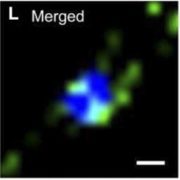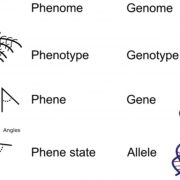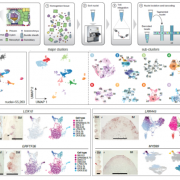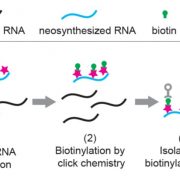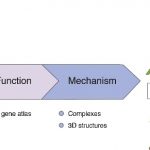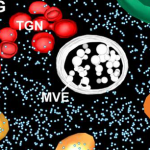Review: Illuminating the hidden world of calcium ions in plants with a universe of indicators (Plant Physiol)
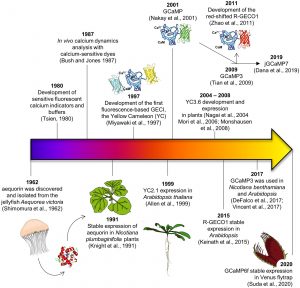 Calcium ions (Ca2+) are ubiquitous and essential signals, with a very steep concentration gradient from outside to inside the cell. Numerous studies from across the kingdoms have demonstrated that transient Ca2+ fluxes convey information of many types. Here, Grenzi et al. provide an Update on the tools that have been developed to quantify and localize these all-important calcium signals, including an interesting timeline of their development and applications. Calcium sensors fall into two camps: dyes and genetically encoded calcium indicators (GECIs). A drawback of the dyes is their need to be introduced into cells, but they also do not require the generation of transgenic plants. Much of this update addresses the pros and cons of various GECIs, including the cameleon indicators that use FRET (Förster resonance energy transfer) to measure the calcium-mediated interaction between a calcium binding protein calmodulin (CaM) and a peptide derived from one of its interacting partners. When calcium is present, the proximity of this protein/peptide pair reorients to closer proximity, allowing fluorescence transfer. These indicators are ratiometric, as they can be normalized to between emission wavelenths to determine expression-level calcium levels. If you’re at all interested in knowing more about how this very important messenger is quantified in plants, have a look. (Summary by Mary Williams @PlantTeaching) Plant Physiol. 10.1093/plphys/kiab339
Calcium ions (Ca2+) are ubiquitous and essential signals, with a very steep concentration gradient from outside to inside the cell. Numerous studies from across the kingdoms have demonstrated that transient Ca2+ fluxes convey information of many types. Here, Grenzi et al. provide an Update on the tools that have been developed to quantify and localize these all-important calcium signals, including an interesting timeline of their development and applications. Calcium sensors fall into two camps: dyes and genetically encoded calcium indicators (GECIs). A drawback of the dyes is their need to be introduced into cells, but they also do not require the generation of transgenic plants. Much of this update addresses the pros and cons of various GECIs, including the cameleon indicators that use FRET (Förster resonance energy transfer) to measure the calcium-mediated interaction between a calcium binding protein calmodulin (CaM) and a peptide derived from one of its interacting partners. When calcium is present, the proximity of this protein/peptide pair reorients to closer proximity, allowing fluorescence transfer. These indicators are ratiometric, as they can be normalized to between emission wavelenths to determine expression-level calcium levels. If you’re at all interested in knowing more about how this very important messenger is quantified in plants, have a look. (Summary by Mary Williams @PlantTeaching) Plant Physiol. 10.1093/plphys/kiab339


